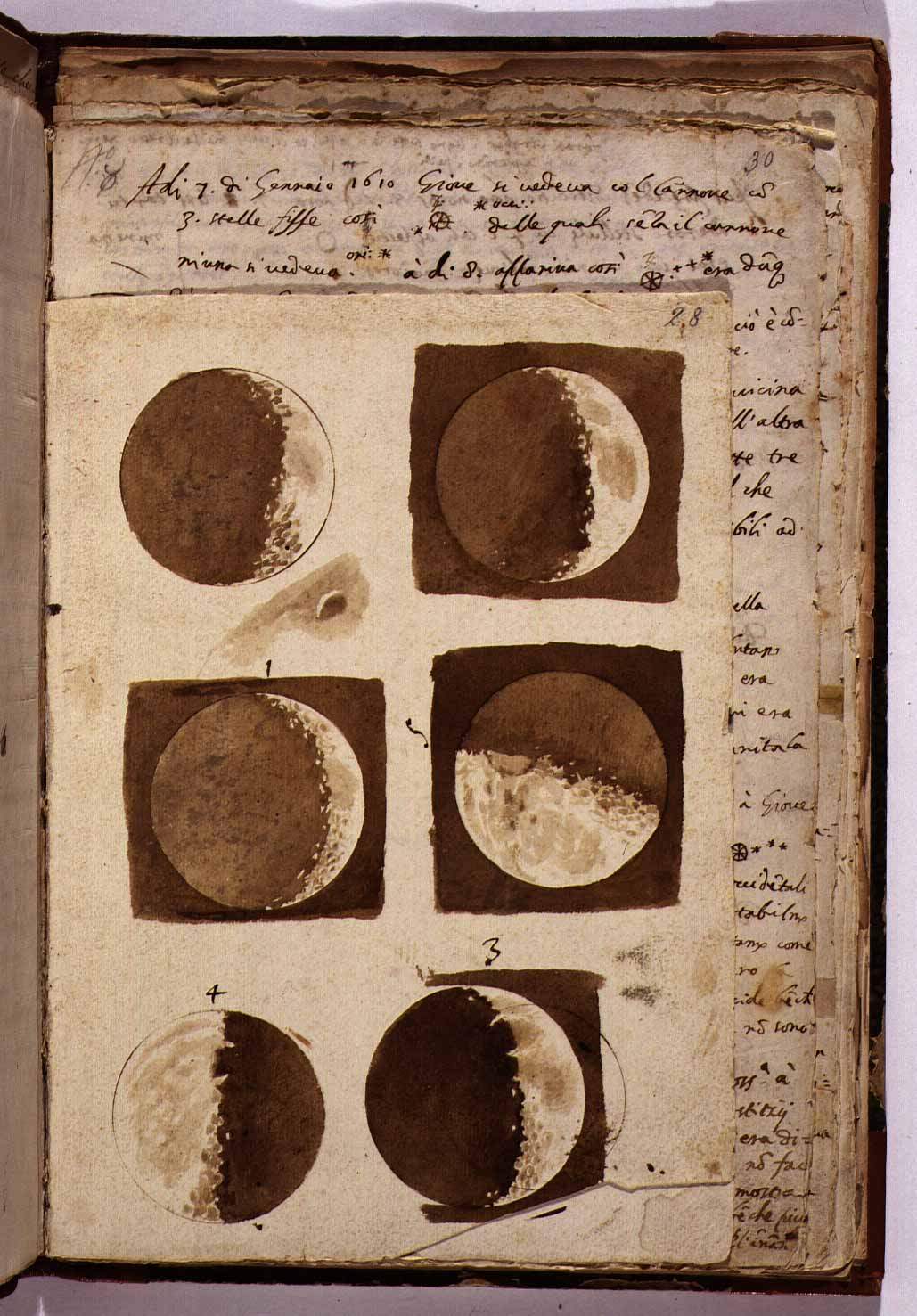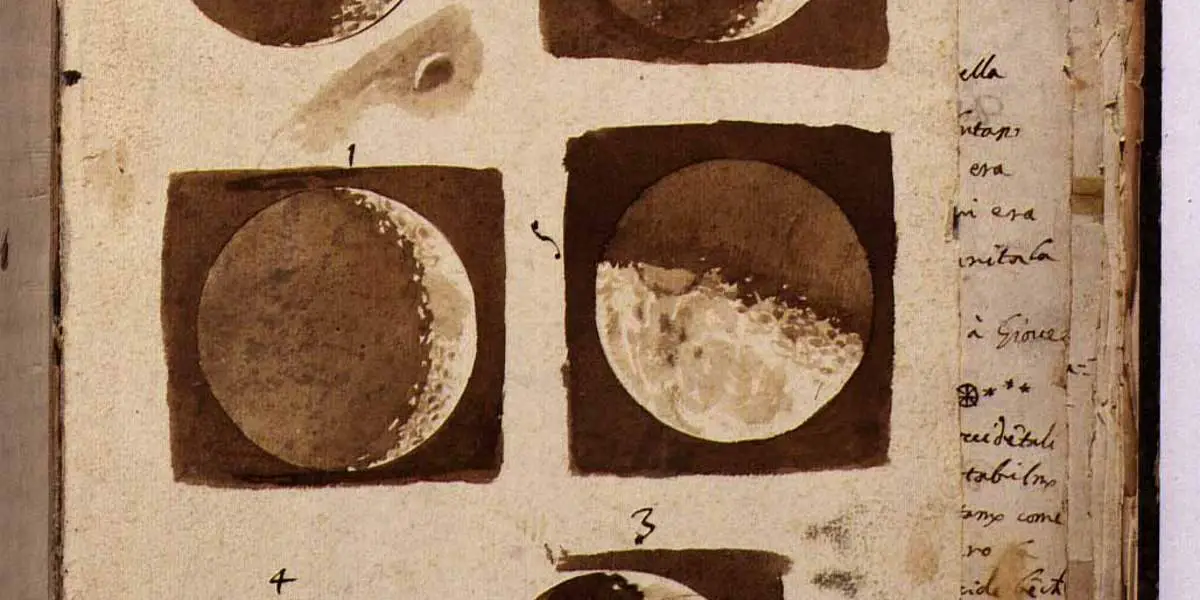Italian astronomer, physicist, engineer, and polymath Galileo Galilei’s (15 February 1564 – 8 January 1642) moon drawings. These were the first

Galileo’s Moon drawings
Prior to Galileo‘s construction of his version of a telescope, Thomas Harriot (1560 – 2 July 1621), an English mathematician, and explorer had already used what he dubbed a “perspective tube” to observe the moon, on the evening of July 26, 1609.
However, based on his extant correspondence as well as entries in his notebooks, as in the case of sunspots, Harriot did not appear to have drawn any particular physical significance from what he saw.
Galileo, due in part to his artistic training and the knowledge of chiaroscuro (see notes 1), had understood the patterns of light and shadow were, in fact, topographical markers.
While not being the only one to observe the moon through a telescope, Galileo was the first to deduce the cause of the uneven waning as light occlusion from lunar mountains and craters. In his study, he also made topographical charts, estimating the heights of the mountains.
Comparing patterns of light and shadow in the vicinity of the terminator (the dividing line between light and shadow) in the first and third quarters, Galileo could argue convincingly that there exist mountains and valleys on the lunar surface
The moon was not what was long thought to have been a translucent and perfect sphere, as the ancient Greek philosopher and scientist Aristotle claimed (Aristotelian doctrine stipulated that celestial bodies were perfectly smooth and spherical), and hardly the first “planet”, an “eternal pearl to magnificently ascend into the heavenly empyrean”, as put forth by Dante.
Notes
- Chiaroscuro (Italian for light-dark), in art, is the use of strong contrasts between light and dark, usually bold contrasts affecting a whole composition. It is also a technical term used by artists and art historians for the use of contrasts of light to achieve a sense of volume in modeling three-dimensional objects and figures. Similar effects in cinema and photography also are called chiaroscuro.
Sources
- Galileo Galilei on Wikipedia
- Galileo Galilei’s Moon drawings on astro.umontreal.ca
- Chiaroscuro on Wikipedia
- How Many Elephants are Left in the World in 2025? - August 17, 2025
- Moon Landings: All-Time List [1966-2025] - February 2, 2025
- What Is Max-Q and Why Is It Important During Rocket Launches? - January 16, 2025

One reply on “Moon Drawings of Galileo Galilei (1609)”
WORD. Check out my Galileo design coming out in a few days! It has everything about this man packed into one super cool info-graphic for t-shirts.